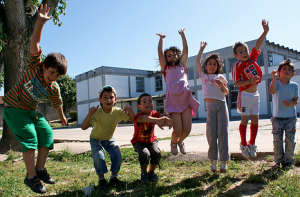Latino Children At Higher Risk For Flame Retardant Chemicals
 By Voxxi
By Voxxi
The information comes in the midst of a nation-wide battle to ban certain chemical flame retardants known as polybrominated diphenyl ethers, or PBDEs. For years, PBDEs were the primary flame retardants used as coating to inhibit or resist the spread of fire in consumer goods such as furniture cushions, mattresses, televisions, and other electronics deemed possible fire hazards.
“If an ordinary upholstered chair in your home gets ignited, it can essentially take your whole house down,” said to EHP Richard Gann, a senior research scientist at the U.S. National Institute of Standards and Technology’s (NIST) Building and Fire Research Laboratory.
Despite the need for fire prevention in a home, the research study headed up by a Duke University chemist, Heather Stapleton, showed all 83 children tested had high levels of PBDEs in their blood stream, with black and Latino toddlers exhibiting twice the levels of white children.
The higher levels of chemicals were also found to correlate with households where fathers lacked higher education, a sign of low economic status.
“Certainly, children are most at risk because children have greater contact with the floor. They — particularly young infants and toddlers — crawl around on the floor, they’re constantly putting their hands in their mouth or their toys in their mouth,” explained Stapleton. “And several studies have now shown that concentrations of PBDEs in children, particularly young children, are significantly higher than they are in adults. So this is certainly a concern, because children are at these very sensitive developmental stages, and they could be more prone, or more vulnerable, to adverse health effects than an adult would be.”
The reason for higher risk levels in Hispanic households, however, remains a mystery, according toTIME. PBDE residues have also been found in food, and this may indicate a relationship to diet that is not confirmed.
“It is unclear at this time why levels are higher in the non-white toddlers. It may be due tobehavioral differences — contact with different treated products in the home, dietary differences or to differences in hand-washing, which may reduce exposure,” added Stapleton. ”We really need to determine why exposures are higher in minority and lower educational families.”
Despite the health implications of PBDEs in the home, the battle to outlaw their use has been in a stalemate due to concerns about high rates of fire-related deaths in minority homes.
“We cannot stand by and let (environmentalists) drown out the voices of those most at risk for fire danger: minorities, the elderly, the infirm and ironically, children,” a representative for Citizens for Fire Safety wrote in a January email headlined Minority Fire Safety at Risk, reported byHispanicBusiness.com.
Stapleton cautions exposure to PBDEs can impact neurobehavior, neurodevelopment, and thyroid hormone regulation. Children exposed while in the womb are at risk for decreased IQ potential as well.
Even if outlawed for current production methods, a number of products in the home already contain the chemicals.
“PBDEs is going to be an issue we’re going to be dealing with for decades. It’s going to be a long-term saga and a long-term story that won’t end any time soon,” she said.
This article first appeared in Voxxi.
[Photo By Mr. Conguito]
